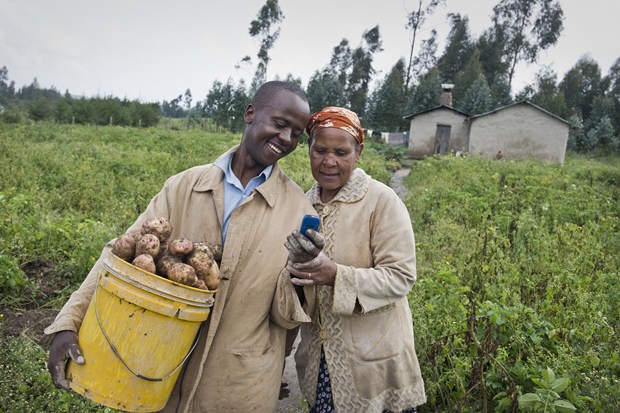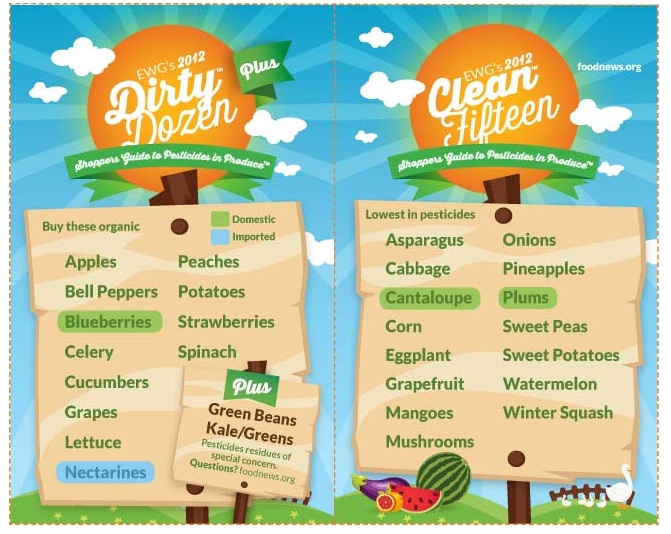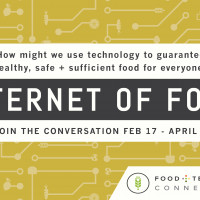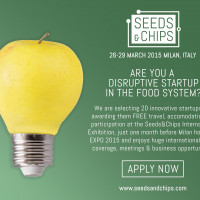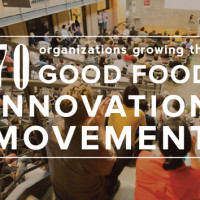Guest post by Danielle Nierenberg and Sarah Small of Food Tank. The views expressed here are solely those of the authors and do not reflect the views of Food+Tech Connect.
Farmers around the world are aging rapidly. As many as 25 percent of farmers in the United States are 65 years or older and in Japan nearly half of all farmers are over the age of 70. Many young people have moved to urban areas and see farming as a punishment, not an opportunity. But, thanks to the growth in internet and mobile technologies, farmers, young and old alike, are finding ways to make small-scale farming more sustainable, resilient and profitable.
Innovations in agriculture don’t just come from veteran environmentalists or food industry heavyweights. In fact, youth around the world are creating inspiring projects and products that are changing how we grow, prepare and eat food.
Technologies Help Small-Scale Farmers Prosper
Young entrepreneurs Jamila Abass, Susan Eve, and Linda-in Kenya created M-Farm, a technology tool for smallholder farmers to receive information on the retail price of their products. Farmers use SMS to buy farm inputs from manufacturers and connect to markets. Members can access market information and post in the online marketplace.
There are many more technologies and new designs that help open up farming as a career option for young people, as well as technologies that help eaters and consumers to make safe, healthy choices.
CORAF/WECARD (Central African Council for Agricultural Research and Development) is becoming a vehicle for West and Central African smallholder farmers to share innovations in agriculture. The organization has produced more than 70 short films (with more than 8,100 views on YouTube) featuring farmers who achieve advances in agricultural productivity and sustainability in their communities.
OneWorld South Asia is using mobile phones and voice technology to provide relevant farming information to more than 150,000 households in 1,000 villages. The program, LifeLines Agriculture, allows farmers, especially those that are illiterate, to use telephone kiosks or cell phones to call and ask questions. The farmer calls back within 24 to 72 hours to receive the answer to their question. More than 460,000 questions have been answered with the help of Field Coordinators.
FarmLogs, a farmer-founded company based in Ann Arbor, Michigan, helps farmers track important information. Using satellite images, FarmLogs maps farmers’ land to help them stay organized. The system has 10 years of rainfall history embedded, and farmers can check the current rainfall without having to go to their field. The technology also helps farmers know when crops are under heat stress. The information is cloud-based and synced in real-time, so the whole farm team is able to see up to date statistics.
Farm Hack is an open-source community for farmers to share knowledge. Community members share their homemade innovations in the Farm Hack forum. One user, WiM, shared a farmbicycle that manages weeds, planting and harvesting. Another user, Emily Hanson, submitted a prototype for a garden-swing-powered water pump that is able to pump 3 liters of water per minute. User pjenkins showed community members how to build a wheel hoe from old bike parts. These are low-cost solutions to challenges farmer face around the world.
Climate change presents complex challenges for farmers of all ages, but youth are eager to use information and communication technologies to gain access to community-driven networks. The Agroecological Intensification Exchange (AIEx), developed by the McKnight Foundation’s Collaborative Crop Research Program (CCRP), is an online platform which engages farmers, innovators, and researchers all over the world in conversations about farming innovation. Agroecological intensification aims at improving productivity and efficiency through better farm management, improved stability and diversity of yields and enhanced use of local resources. The site’s database, complete with case studies and research on topics from crop ecology to disease management, is a resource for practitioners and researchers in developing countries seeking to improve agricultural systems and adapt to the changing climate.
Apps Empower Educated Eaters
There are currently more than one billion smartphones in use across the world – and that figure is projected to double this year. As the use of mobile devices continues to grow, apps have become an incredibly effective way of providing information and resources about food to a wide audience.
The Dirty Dozen was produced by the Environmental Working Group (EWG), a nonprofit environmental research organization. This app focuses on which types of conventionally raised produce are the lowest in pesticides and which types are the highest. Lists include the Dirty Dozen, like apples, spinach and grapes, and the Clean Fifteen, like sweet corn, asparagus and cantaloupe. The app helps decide when finding an organic alternative is especially important.
The ROC National Diners’ Guide app focuses on promoting food justice by tracking the treatment of workers in the restaurant industry. Users are provided with information on the living wage, paid sick leave and advancement opportunities at some of the largest restaurants in the country. If conditions could be better, consumers are encouraged to get involved by speaking to management or sharing information on social media.
The HarvestMark Traceability app allows its users to trace their fresh food back to the farm that it came from, by scanning any fruit or vegetable with the HarvestMark logo on it and pulling up the item’s information on the app. It also provides instant updates on any food recalls affecting HarvestMark produce.
For those planning on growing their own vegetables at home, the Urban Farming Assistant Starter app sets reminders for when to water, fertilize and care for plants. It also helps to find organic solutions to pests, diseases, and other gardening issues.
In partnership with Top Box Foods and Aisle Won, the Renaissance Project launched the free NOLA Food Partnership app in order to connect residents to fresh produce and frozen groceries. The app allows residents of New Orleans, LA to purchase food boxes from Top Box, at roughly half the cost of average grocery store prices. According to Top Box, volunteer support and low overhead costs allow them to maintain their reasonable prices. “In a place like New Orleans, no one should go hungry,” explains Greta Gladney, the founder of the Renaissance Project.
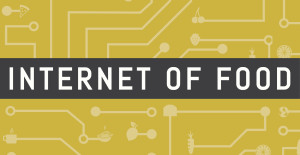 Internet of Food is editorial series exploring how we might use technology, new business models and design to guarantee healthy, safe and sufficient food for everyone. Join the conversation between February 17 and April 2. Share your ideas in the comments, on Twitter using#internetoffood, Facebook or LinkedIn.
Internet of Food is editorial series exploring how we might use technology, new business models and design to guarantee healthy, safe and sufficient food for everyone. Join the conversation between February 17 and April 2. Share your ideas in the comments, on Twitter using#internetoffood, Facebook or LinkedIn.
________________
 Danielle Nierenberg is President of Food Tank and an expert on sustainable agriculture and food issues. She has written extensively on gender and population, the spread of factory farming in the developing world and innovations in sustainable agriculture. Danielle co-founded Food Tank, a 501(c)(3) non-profit organization, in 2013 as an organization focused on building a global community for safe, healthy, nourished eaters. Read more about here here.
Danielle Nierenberg is President of Food Tank and an expert on sustainable agriculture and food issues. She has written extensively on gender and population, the spread of factory farming in the developing world and innovations in sustainable agriculture. Danielle co-founded Food Tank, a 501(c)(3) non-profit organization, in 2013 as an organization focused on building a global community for safe, healthy, nourished eaters. Read more about here here.
 Sarah Small is Global Events Director & Special Assistant to the President at Food Tank, a nonprofit organization focused on building a global community for safe, healthy, nourished eaters. We spotlight environmentally, socially, and economically sustainable ways of alleviating hunger, obesity, and poverty and create networks of people, organizations, and content to push for food system change. Read more about her here.
Sarah Small is Global Events Director & Special Assistant to the President at Food Tank, a nonprofit organization focused on building a global community for safe, healthy, nourished eaters. We spotlight environmentally, socially, and economically sustainable ways of alleviating hunger, obesity, and poverty and create networks of people, organizations, and content to push for food system change. Read more about her here.

